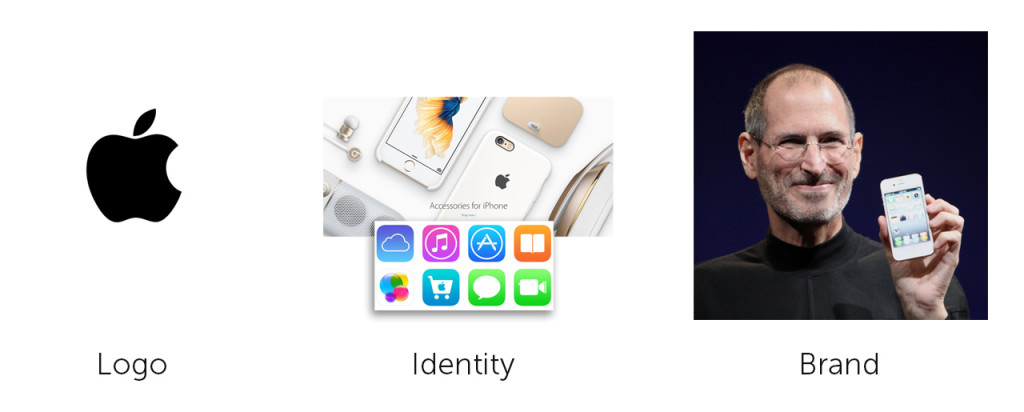But while I love making logos for clients, I have found more and more that the environment of competition for logo design has skewed people’s expectations of what a logo is and why they need one. Large corporations have vast resources to develop their brands and keep things like logos fresh. They can hire large design firms to consult with their large internal design and marketing teams to manage their image, something small to medium business owners don’t have the luxury of. They have to research and save because often they can’t afford to develop a brand that won’t work for them.
It’s in this research process that the Internet echo chamber can do real damage. Here are some insights I try to impart to clients looking for branding and logo help that can hopefully clear up some of the biggest misconceptions I often run into.
1. Your Logo Is Not Your Brand
This cannot be overstated. Too often I work with clients who focus so hard on their logo that they lose sight of the big picture. A logo can’t be everything; it’s not your entire company name and website, it’s not your full list of services, and it’s not your tagline. A logo symbolizes all this. It is a touchstone that you use to mark your product or service so your client knows it’s from you, that it’s passed inspection, that it has your backing. It is a tool in your toolbox, albeit an important one.
Your brand is something less tangible but much more important. Think of it like handing your business card to someone. It has your logo on it, which is declarative of where that card came from. The color of the print, the paper quality, the typeface you set everything in, and the tagline under the logo are your identity, more tools in your toolbox. The brand is all of this, but most importantly it is you, the person handing over the card and what you represent. Your brand is your relationship with your customer, it’s your attention to detail, it’s your passion and it’s your product. It’s critical to have this perspective when thinking about what you’re looking for in a logo and why.
2. Your Logo Is An Investment, Not A Cost
Despite the fact that your logo is not the end-all-be-all of your branding strategy, one should not dismiss its importance – or price. A logo builds value over time, and the stronger your brand the more powerful your logo becomes. Consider the Apple logo; with a brand valued at over $150 billion that mark has become a cultural icon, and any product emblazoned with it reaps significant financial benefits.

Original Apple logo (left), current Apple logo (right)
The problem nowadays is that hungry designers all over the world are chomping at the bit to get exposure. Enter, the Internet. As mentioned above, the popularity of the logo has ironically hurt its value in the eyes of design customers. Between those willing to work for cheap/free and the never-ending parade of “isn’t this cool?!” blog lists, the availability of logo design has outstripped the demand. There is even an entire business model dedicated to undercutting the design process by offering pre-designed logos for basically free.
The issue with a $5 logo is, of course, quality. And when it comes to your brand the old adage of “penny wise, pound foolish” applies. Investing in your brand pays dividends down the road, and a bespoke logo design will grow with your business over the years. It gives your brand that feeling of honesty, quality, and attention to detail that your customers will notice. Speaking of which…
3. Your Logo Is Not For You
Something that often gets forgotten in the process of designing a logo is the fact that you, the person paying to have it designed, are not the end consumer of the piece. While you have to like the logo and stand behind it, you have to allow the logo to work for you. If you’re making changes to a logo because you just don’t “like” it as opposed to “it’s not doing what we need it to do”, then you’re letting vanity get in the way of an honest relationship with your customers. This is a big reason why it is so hard to design your own logo. Trust me, designing a personal logo is the bane of every designer’s existence. This is why even designers will pay to have someone else do it. It’s that outside perspective and expertise that will net you the logo your brand needs.
In the end, it’s important to have realistic expectations of what your logo should do for you. It’s a key component of your brand strategy, of your identity, but it’s not a Swiss Army knife. It deserves respect and care, but not so much that you internalize it to the detriment of your brand. Let it work for you, and if you manage your brand and your product well it will build equity over time. Excelsior!

